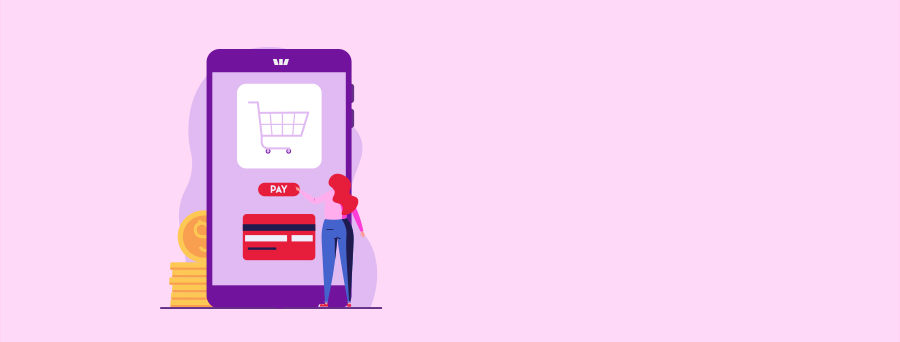
Buying or Selling Scams
What are buying & selling scams?
Scammers can pose as both buyers and sellers, trying to scam you out of money or items you might be looking to buy or sell. Once you pay for or send an item, it is gone.
As a buyer, you may be tricked into paying for a product or service that may not exist or is never delivered. These are also known as online shopping scams, classified scams, health and medical product scams, mobile premium services scams, or psychic scams.
As a seller, you may be tricked into believing the buyer has paid in full or even paid over your advertised amount, including sending falsified payment receipts to support their claim. The buyer may request a refund for overpayment or reimbursement for out of pocket expenses, or you later find the amount was not paid into your account.
Examples of scams*
Alex was eager to sell his car on an online selling site. He advertised it for $20,000 and was excited to have a buyer respond quickly.
His buyer was living interstate and asked Alex if the car could be couriered to his location. Alex agreed. The buyer insisted on transferring the funds immediately, including additional costs to cover the courier.
The buyer sent Alex a coloured copy of his driver’s licence and a payment receipt.
Happy that he had proof of the payment and the buyer’s identification, he sent the car to the requested location.
Alex then realised the funds had not gone into his account. He could not get in contact with the buyer and found the licence he had been sent had been stolen.
Alex never received his money and lost the car.
Connie answered the door to a friendly tradesperson Mark.
Mark pointed out that repairs were urgently needed on her property, or her roof would soon collapse and cost three times the amount to fix it.
Connie was worried she had a considerable issue with her roof and could not afford the cost if it were to collapse; she asked if Mark could fix it straight away.
Mark agreed and booked the job in for Friday but requested the payment upfront in cash.
On Friday, Mark was unable to be contacted, and did not complete the work. At this point Connie realised she had been scammed and lost her money.
However, she was still concerned about her roof and wanted to ensure there was no work needed. To be sure, she had it inspected by a local tradesperson, who confirmed no work was required, further confirming this was a scam.
Jane had been searching online for a Cavoodle for her family and saw an ad for a puppy for sale for $3,000. She went to the breeder’s website, which appeared to be reputable, listing guarantees and testimonials. The breeder was located interstate.
Jane had several conversations by email and phone with the breeder, Sarah, and agreed to pay a deposit of $1,500 as well as $500 for the cost of transport. A couple of days before the delivery date, Sarah asked for the balance owing to be paid. Jane refused to pay until she had received the puppy.
No puppy ever arrived. Jane’s attempts to contact Sarah via emails, phone and the website went unanswered. The $2,000 Jane had paid was never recovered. These scams are also known as puppy scams or Gumtree scams.
Signs this may be a scam

Scammers can be buyers or sellers using legitimate sites.
Always verify if an item is real, particularly pets, by checking reviews, doing internet searches, viewing goods in person, and always use secure payment options.

You are asked to pay upfront or by unusual payment methods.
Do not proceed, it’s likely they are scammers. Do not provide an up-front payment to a stranger via money order or wire transfer.

You're invoiced for items you never ordered or from a company you do not know.
Do not pay. Contact the company on a number you’ve used previously or a trusted source – never use a number provided in the request to pay.

You receive an email or text confirming that a payment has been made.
Do not rely on this as confirmation. Always sign in to your account to confirm funds have been received.
How can you protect yourself?
When buying or selling online, there are some ways that you can send and receive money securely.
1. Use PayID or Digital Card
PayID allows you to securely transfer money to another bank account. You can confirm the payee’s name, before sending any money. As a Seller, it’s a convenient way for your buyers to confirm they are paying you. If you’re buying from an online shop, your Digital Card has a 3-digit security code (CVC) that changes every 24 hours making your card details even more secure if the merchant’s shopping cart is compromised.
2. Use payment services that offer buyer protection
Payment services, such as PayPal1, provides additional protection for buyers where a purchase doesn’t go according to plan, such as an item not being as described. To set up an account, always go directly to the providers’ official website.
3. Meet in person
Meet at a safe, public space and take a friend or relative with you. For high-value transactions, you can make payments on the spot through your mobile using PayID or a secure payment service.
What you can do if you
come across a scam
Let us know
- Please report scams or unusual activity immediately to Westpac at 132 032 or +612 9155 7700 (if calling from overseas).
- Forward unusual emails to hoax@westpac.com.au or SMS/text messages to 0497 132 032 then delete the email or message.
- You can also report all unusual activity to the Australian Cyber Security Centre at cyber.gov.au/report.
Get support and stay in the know
- IDCARE provides free, confidential support and guidance to those impacted by fraud, scams, identity theft or compromise. Call them toll-free on 1800 595 160 or visit idcare.org.
- Keep up to date on scams by subscribing to the government's scam email alerts from scamwatch.gov.au/subscribe.
- Check out our latest scams, for copies of recently reported scams at westpac.com.au/scams.
ScamSpot: a series of 2-minute bites to help spot the latest scams
Things you should know
* Examples are based on one or more real scam reports received by Westpac. For privacy purposes real names have not been used.
1. Please ensure you read the applicable terms and conditions for Online Banking.
This information is general in nature and has been prepared without taking your personal objectives, circumstances and needs into account. You should consider the appropriateness of the information to your own circumstances and, if necessary, seek appropriate professional advice.


